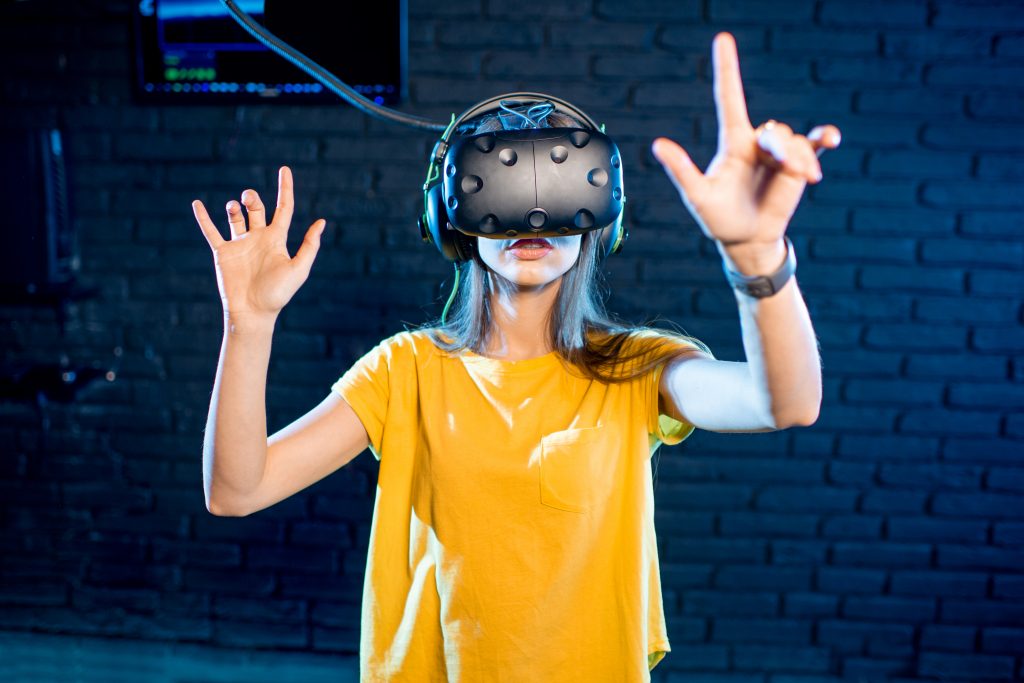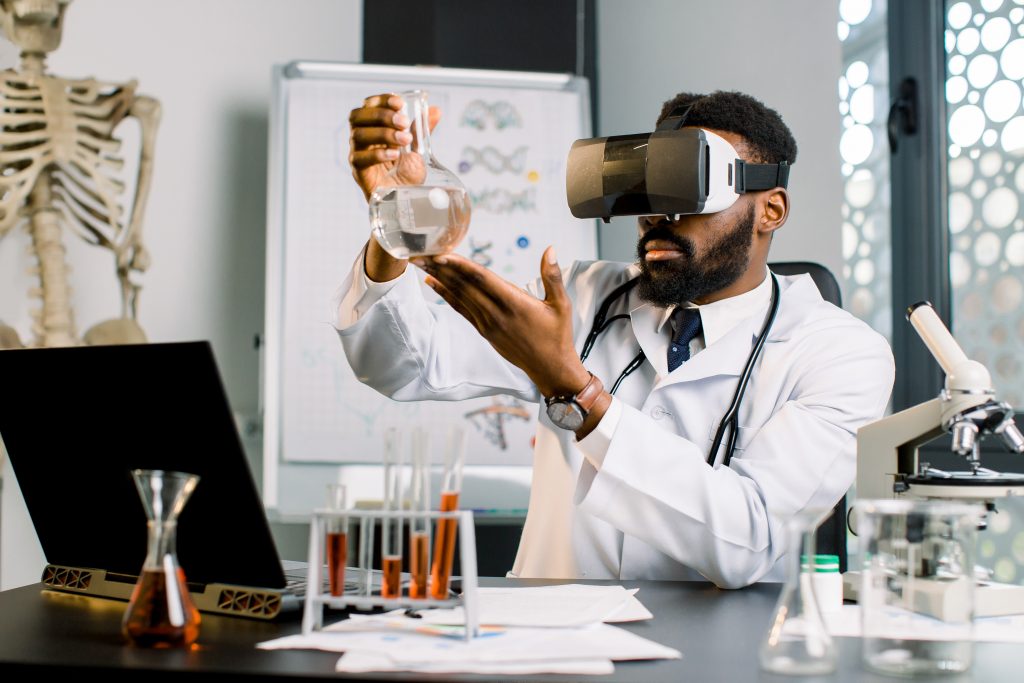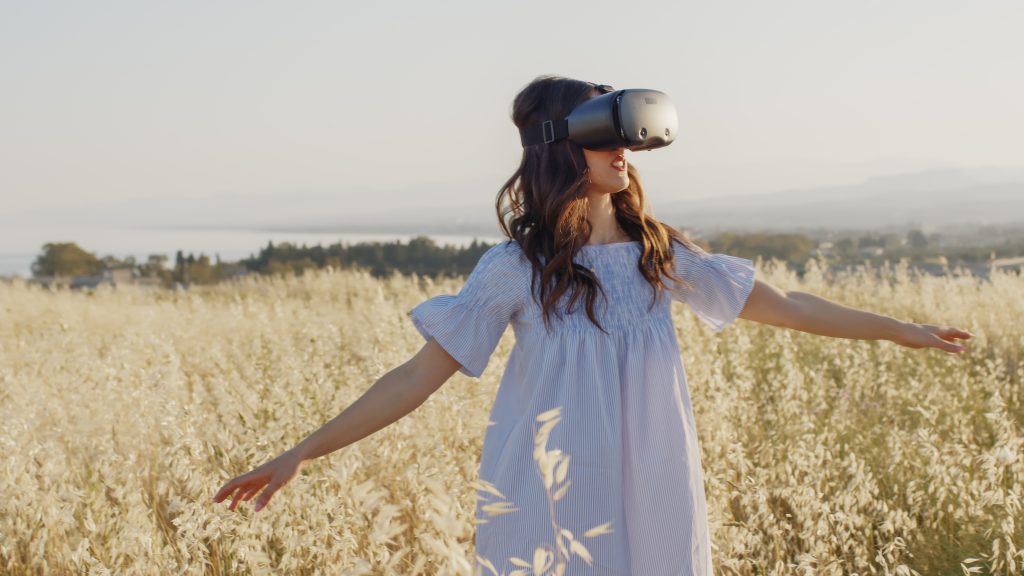
Augmented reality (AR) is an innovative technology that has the potential to transform education and learning. This technology superimposes computer-generated images on real-world objects, providing a new way for learners to interact with their surroundings. AR can be used to create immersive and interactive experiences that engage and motivate learners of all ages. This technology is already being used in a variety of ways in classrooms around the world, and its use is only set to grow in the future. The introduction of Augmented Reality in education will allow students to learn in ways never before thought possible.
AR has a number of advantages over traditional learning methods. It can provide learners wither easier access to more complex concepts. AR can also be used to create customized learning experiences that are tailored to the needs of individual learners. This technology has the potential to revolutionize education and provide new opportunities for learner-centered instruction.
With many AR goggles, glasses, and headsets to choose from in the VR Superstore, there is no need to worry about how this amazing technology can be implemented in your children’s education. Below you will discover how these technologies are truly changing the way that we educate our youth. Afterward, head over to our online store to discover the many options that are available to make a truly effective change in your child’s learning.

There are different ways in which AR can be used in education. One popular way is through the use of AR apps on smartphones and other mobile devices. These apps can be used to augment real-world objects with digital content, such as 3D models, video, or text. This content can then be interacted with using the device’s touchscreen or camera using artificial intelligence in order to make the experience more life-like. Imagine viewing a three-dimensional (3D) model of the human heart on your smartphone and then being able to zoom in on different parts of it, or rotate it to see it from different angles.
Then imagine this human heart in real space, viewing the experience as if it was right in front of you or inside of the palm of your hand. This type of immersive learning experience is not only not possible with traditional 2D educational resources, but this 3D AR experience is more cost-efficient and flexible to any location.
One example of an Augmented Reality app for early childhood education is “Stack the States”. This app uses Augmented Reality to help young children learn about the different US states. The app includes a jigsaw puzzle of the United States, which when completed can be viewed in Augmented Reality. Once the Augmented Reality mode is activated, different facts about each state appear, such as the state flower or capital city.
Even more augmented reality apps are being developed that can be used to teach young children basic concepts such as shapes, colors, and numbers. These apps often make use of Augmented Reality Markers, which are special images that can be detected by a mobile device’s camera. When these markers are detected, they trigger the display of digital content on the screen. These apps often make use of playful and engaging content to hold children’s attention and interest and can be especially beneficial for children with ADHD and other attention and mood disorders.
Augmented reality apps are being used to support and enhance learning in a variety of subjects. For example, the anatomy app ‘ Holo Anatomy ’ allows users to see and interact with 3D models of the human body. Augmented reality simulations such as this are another way to provide students with the opportunity to experience real-world scenarios in a safe and controlled environment. This can be particularly valuable for students who are studying complex topics or preparing for careers in high-risk professions.

AR can also be used in even more immersive ways, such as through the use of virtual reality (VR) headsets. These headsets provide learners with a completely immersive experience by placing them in a computer-generated world. This type of AR has been shown to be particularly effective for teaching spatial concepts and providing hands-on learning experiences to children of all ages.
A number of studies have shown that VR can be an effective tool for education, with one study finding that VR can improve children’s performance on standardized tests. VR can also be used to provide learning experiences that would otherwise be difficult or impossible to replicate in the real world, such as visits to historical sites or simulations of dangerous environments.
Another way in which AR is being used in education is through the use of dedicated AR headsets. These headsets allow users to view and interact with digital content that is overlaid in the real world. Augmented reality headsets are becoming increasingly popular in classrooms, as they offer a more immersive and interactive learning experience than traditional methods.
This headset can be used to provide an immersive 3D experience and has been used in a number of educational applications, and can also be used to provide children with a virtual playground, where they can explore and play without the possibility of getting hurt and needing constant supervision.
With AR headsets, it is possible to create virtual laboratories and simulations for science students. This allows students to experiment with dangerous chemicals or procedures without any risk to themselves. Virtual simulations also provide an opportunity for students to learn in a controlled environment where mistakes can be easily corrected. This type of learning is particularly beneficial for science students, as it allows them to gain practical experience without any safety concerns.
Augmented reality has a range of potential applications in education, and its use is only set to grow in the future. This technology has the potential to revolutionize education and provide new opportunities for learner-centered instruction. Augmented reality has the potential to provide new ways for learners to interact with their surroundings.
Augmented reality can be used to create customized learning experiences that are tailored to the needs of individual learners, and has the potential to make complex concepts more accessible to all learners. With AR and educational tools from the VR Superstore children of all ages will be able to discover a new way of learning.
Visit the VR Superstore today to explore our products and make your educational experience completely immersive!
Virtual Reality (VR) is no longer a niche technology for gamers and tech enthusiasts; it has rapidly become a transformative tool across industries. From gaming and entertainment to education, healthcare, and business, VR is changing how we interact, learn, and experience the world. If you’re considering investing in VR headsets and accessories, now is the […]
Buying VR Headsets From The VR Super Store Stepping into the world of virtual reality (VR) can be an overwhelming experience if you are a first time buyer. The VR Super Store is dedicated to helping customers of all experience levels find the perfect VR headset that fits exactly what you need. This guide aims […]
Buyers Guide for VR & 3D Printing Products Virtual Reality (VR) and 3D printing technologies are revolutionizing multiple industries, from gaming and entertainment to healthcare and manufacturing. If you’re looking to dive into these innovative fields, this guide will help you make informed decisions when purchasing VR and 3D printing products. The VR Super Store […]
Stay updated with the latest VR news, exclusive discounts, and special offers by subscribing to our weekly newsletter.